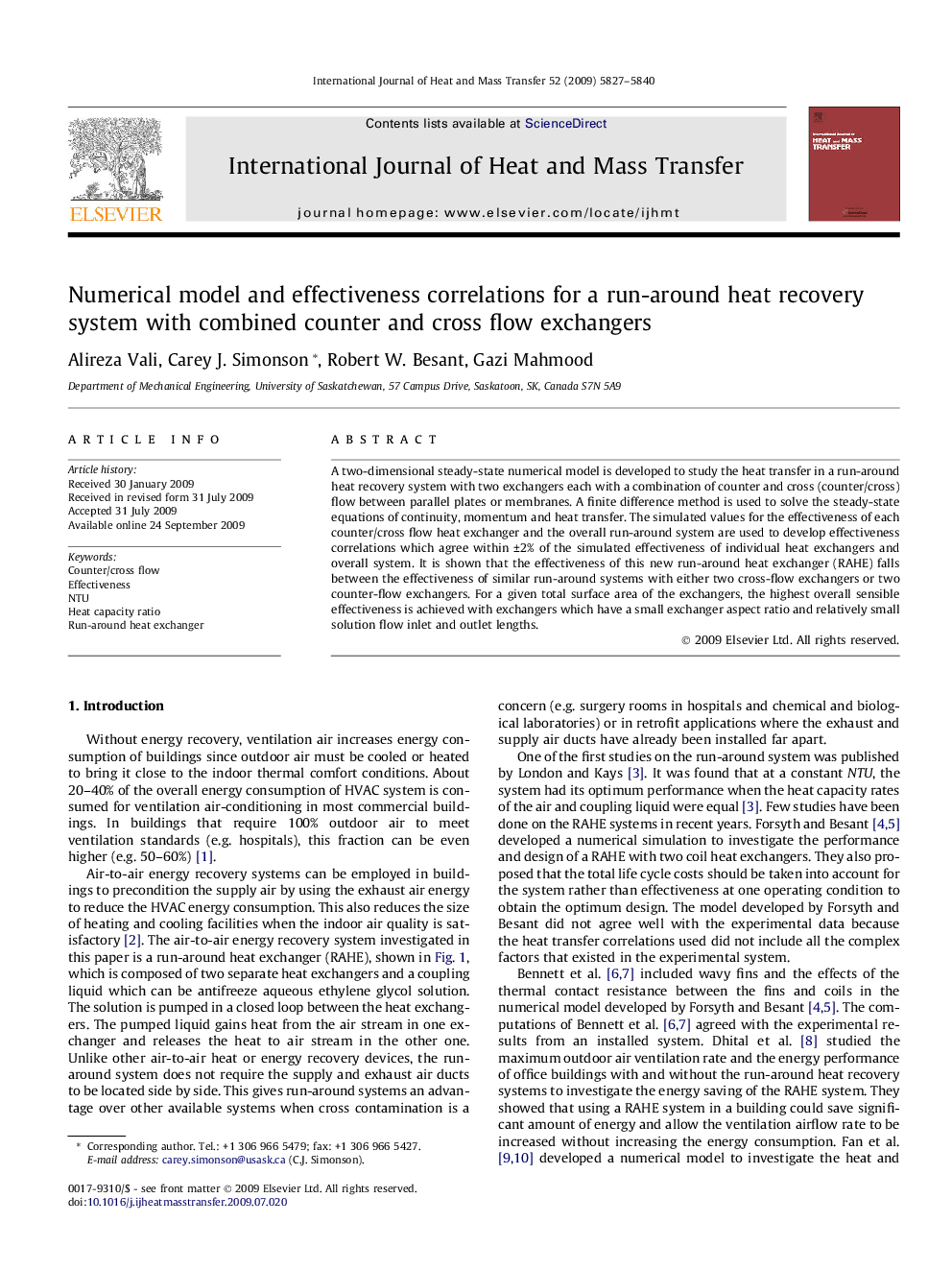| Article ID | Journal | Published Year | Pages | File Type |
|---|---|---|---|---|
| 661225 | International Journal of Heat and Mass Transfer | 2009 | 14 Pages |
Abstract
A two-dimensional steady-state numerical model is developed to study the heat transfer in a run-around heat recovery system with two exchangers each with a combination of counter and cross (counter/cross) flow between parallel plates or membranes. A finite difference method is used to solve the steady-state equations of continuity, momentum and heat transfer. The simulated values for the effectiveness of each counter/cross flow heat exchanger and the overall run-around system are used to develop effectiveness correlations which agree within ±2% of the simulated effectiveness of individual heat exchangers and overall system. It is shown that the effectiveness of this new run-around heat exchanger (RAHE) falls between the effectiveness of similar run-around systems with either two cross-flow exchangers or two counter-flow exchangers. For a given total surface area of the exchangers, the highest overall sensible effectiveness is achieved with exchangers which have a small exchanger aspect ratio and relatively small solution flow inlet and outlet lengths.
Keywords
Related Topics
Physical Sciences and Engineering
Chemical Engineering
Fluid Flow and Transfer Processes
Authors
Alireza Vali, Carey J. Simonson, Robert W. Besant, Gazi Mahmood,
